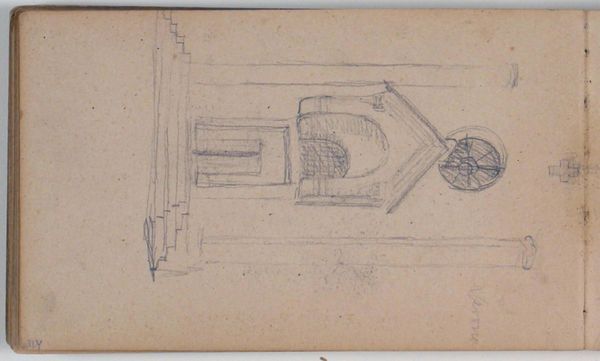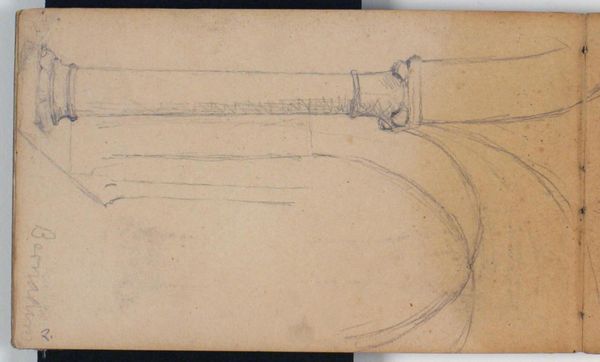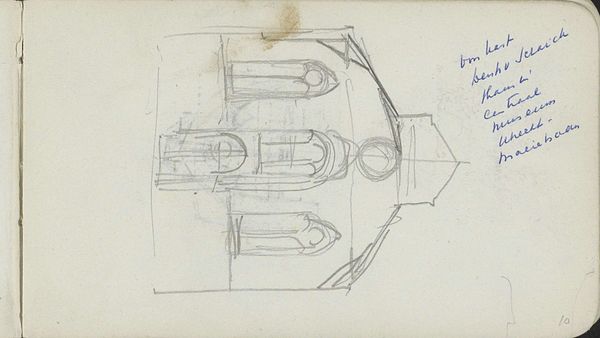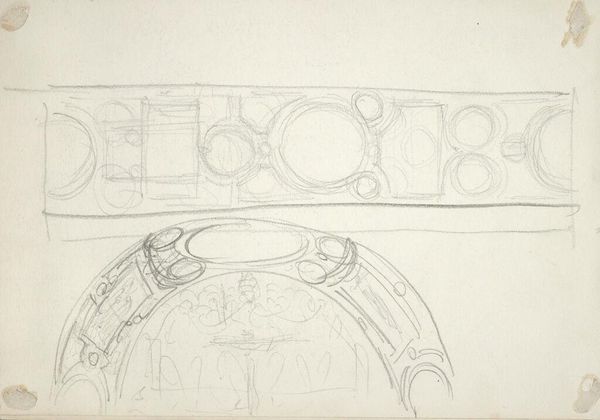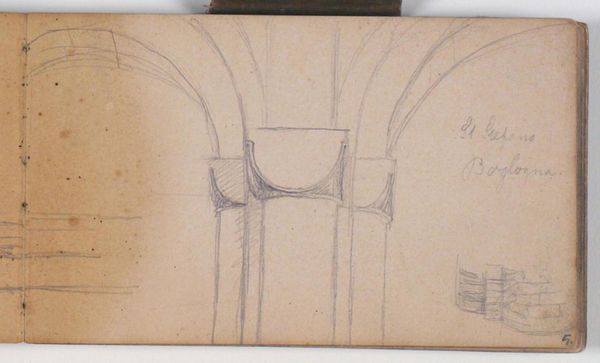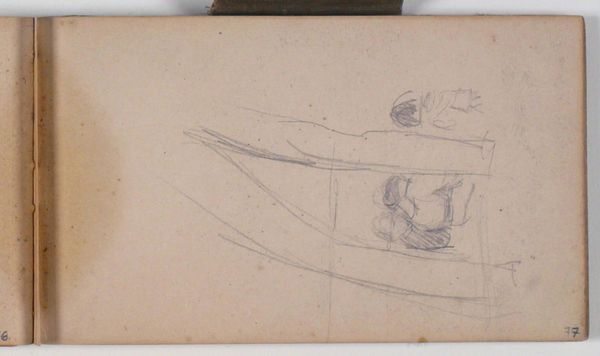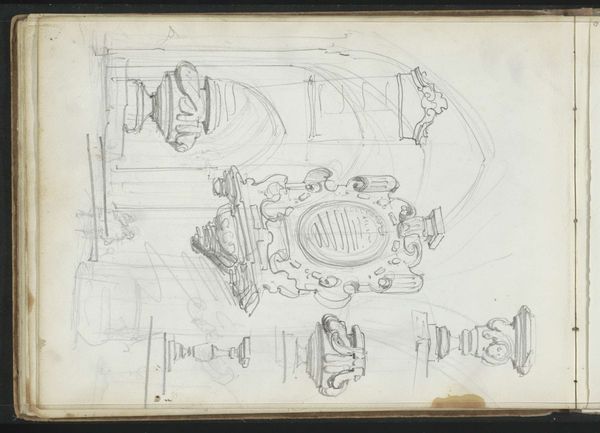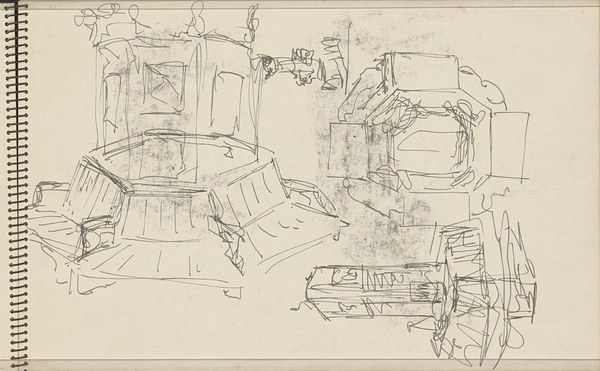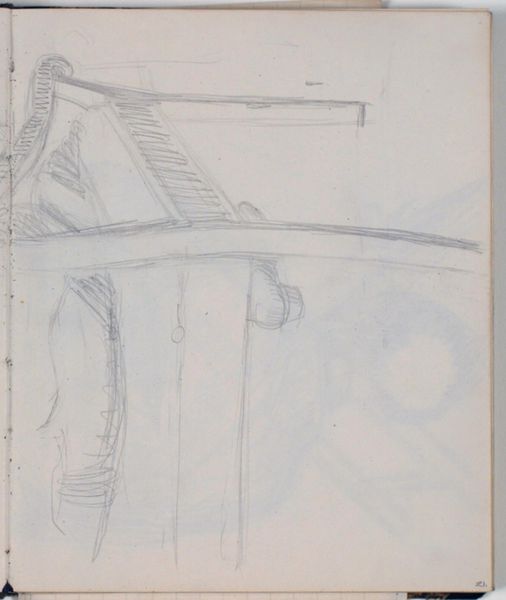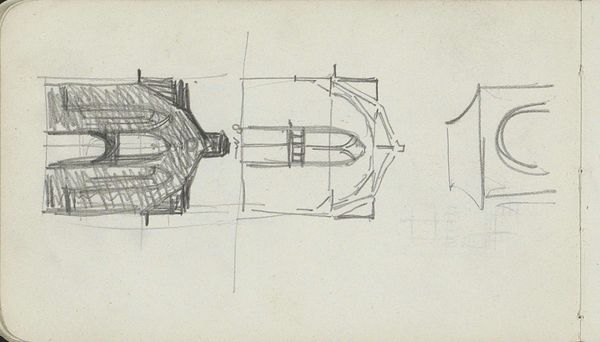
Dimensions: 101 mm (height) x 168 mm (width) (bladmaal)
Curator: Niels Larsen Stevns’ pencil drawing from 1896, titled “Interiør fra S. Stefano, Bologna," captures a detailed architectural scene. What strikes you most when you look at it? Editor: The repetitive arches really draw the eye; there's an echoing effect created by the lines and their subtle asymmetries that lend it this quiet solemnity, a contemplative space. I am also interested in how the artist’s lines denote light in such a sparse image. Curator: The careful construction speaks to the spiritual and symbolic weight these architectural spaces have carried through centuries. Note the deliberate curvature—it's reminiscent of a halo, the lines directing our gaze toward a focal point in this sketch from the Basilica di Santo Stefano. It evokes echoes of ritual. Editor: Exactly. It feels almost archaeological, with those penciled lines mapping not just space but also, potentially, the artist’s encounter with labor. The materiality is right there—the paper's texture, the graphite of the pencil—bringing the social dimension of making art to the surface. Curator: The interplay of realism and impressionism also contributes. There's a tangible sense of being present in the basilica while, at the same time, there’s a fleeting quality, as if the space is being captured through memory. That really encapsulates how religious sites gain iconic power over time. Editor: I agree, and I like that it seems unfinished, in that we feel privy to Stevns’ process of capturing form, how the light works to denote volumes in these large spaces that would have required complex manual work. We tend to forget, or deliberately hide the hand involved in what is being depicted! Curator: Absolutely. It encourages us to think of both the physical construction of the basilica and the mental process of image making. These parallel creations—physical space and mental image—have reverberated in the popular consciousness. Editor: Right. Seeing how Stevns employed the drawing process as an inquiry rather than pure, picturesque image-making invites us to engage more deeply with the cultural contexts, rather than just an iconic image divorced from the processes needed for its very existence. Curator: Indeed, the drawing becomes an evocative intersection of materiality and iconography. Thank you. Editor: My pleasure; it's wonderful how this understated drawing prompts consideration about historical construction and artistic construction alike.
Comments
No comments
Be the first to comment and join the conversation on the ultimate creative platform.

